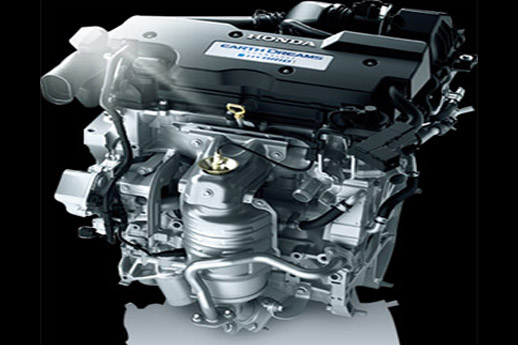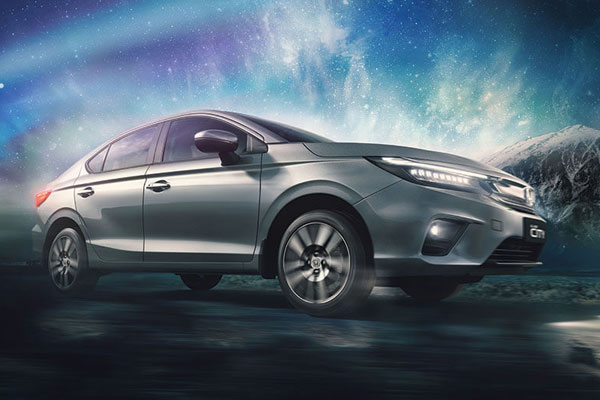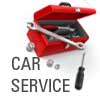Turbocharger: Components, Working Principles AND Types
A Turbocharger is a device that is used to increase the power of the engine or one can say efficiency of engine by increasing the amount of air entering into the combustion chamber. More air into combustion chamber means more amount of fuel will be admitted into the cylinder and as a result one will get more power from the same engine if the turbocharger is installed in it.
Very simply, a turbocharger is a kind of air pump taking air at ambient pressures (atmospheric pressure), compressing to a higher pressure and passing the compressed air into the engine via the inlet valves.
At the present time, turbos are used mainly on diesel engines, but there is now a move towards the turbo charging of production petrol engines.
The amount of engine that actually goes into the engine’s cylinder, compared with the theoretical amount if the engine could maintain the atmospheric pressure, is called volumetric efficiency and the aim of turbocharger is to improve an engine’s volumetric efficiency by increasing density of the intake gas.
The turbocharger draws the air from atmosphere and compresses it with the help of centrifugal compressor before it enters into the intake manifold at increased pressure. This results in more amount of air entering into the cylinders on each intake stroke. The centrifugal compressor gets power from the kinetic energy of engine’s exhaust gases.
Components Of Turbocharger
The turbocharger has three main components
1. The turbine, which is almost a radial inflow turbine.
2. The compressor which is almost a centrifugal compressor.
3. The center hub rotating assembly.
A turbocharger is made up of two main sections: the turbine and the compressor.
The turbine consists of the turbine wheel and the turbine housing. It is the job of the turbine housing to guide the exhaust gas into the turbine wheel. The energy from the exhaust gas turns the turbine wheel, and the gas then exits the turbine housing through an exhaust outlet area.
The compressor also consists of two parts: the compressor wheel and the compressor housing. The compressor’s mode of action is opposite that of the turbine. The compressor wheel is attached to the turbine by a forged steel shaft, and as the turbine turns the compressor wheel, the high-velocity spinning draws in air and compresses it. The compressor housing then converts the high-velocity, low-pressure air stream into a high-pressure, low-velocity air stream through a process called diffusion. The compressed air is pushed into the engine, allowing the engine to burn more fuel to produce more power.
Working Principle
A turbocharger mainly consists of two main sections: the turbine and the compressor. The turbine consists of turbine wheel and the turbine housing whose purpose is to guide the exhaust gases into the turbine wheel. The kinetic energy of the exhaust gases gets converted into the mechanical after striking it on turbine blades. The exhaust outlet helps the exhaust gases to get exit from the turbine. The compressor wheel in turbocharger is attached to a turbine with the help of steel shaft and as the turbine turns the compressor wheel, it draws the high-velocity, low pressure air stream and convert it into high-pressure, low –velocity air stream. This compressed air is pushed into the engine with the more quantity of fuel and hence produce more power.
The waste exhaust gases of the engine are utilized to drive a turbine wheel, which is connected to a compressor wheel by a shaft. The compressor or air wheel sucks in air through the air filters and passes this into the engine.
As the waste gases are expelled from the engine, they are directed to the turbine or hot wheel of the turbo and so completes the cycle.
1. Capture
Instead of escaping through the exhaust pipe, hot gases produced during combustion flow to the turbocharger. The cylinders inside an internal combustion engine fire in sequence (not all at once), so exhaust exits the combustion chamber in irregular pulses.
Conventional single-scroll turbochargers route those irregular pulses of exhaust into the turbine in a way that causes them to collide and interfere with one another, reducing the strength of the flow. In contrast, a twin-scroll turbocharger gathers exhaust from pairs of cylinders in alternating sequence.
Plenty of models use this gearbox, and some of the crowd favorites are Honda Civic, Honda Accord, Chevrolet Spark, Ford C-Max, Nissan Sentra, and more.
2. Spin
The exhaust strikes the turbine blades, spinning them at up to 150,000 rpm. The alternating pulses of exhaust help eliminate turbo lag.
3. Vent
Having served their purpose, exhaust gases flow through an outlet to the catalytic converter, where they are scrubbed of carbon monoxide, nitrous oxides and other pollutants before exiting through the tailpipe.
4. Compress
Meanwhile, the turbine powers an air compressor, which gathers cold, clean air from a vent and compresses it to 30 percent above atmospheric pressure, or nearly 19 pounds per square inch. dense, oxygen-rich air flows to the combustion chamber.
The additional oxygen makes it possible for the engine to burn gasoline more completely, generating more performance from a smaller engine. As a result, the Twin Power engine generates 30 percent more power than a non-turbocharged one of the same sizes.
It follows the following process
1. The engine’s air intake sucks in cool air and sends to the compressor.
2. The compressor compresses the incoming air and heats it up. It then blows out the hot air.
3. The hot air cools down when passing through the heat exchanger and enters the cylinder’s air intake.
4. The cold air burns inside the combustion chamber at a faster rate because of carrying more oxygen.
5. Due to the burning of more fuel, the energy output will be bigger faster, and the engine will be able to send more power to the wheels.
6. Hot waste gasses will leave the chamber and blows past the turbine at the exhaust outlet.
7. The turbine rotates at a high speed and spins the compressor too as both are mounted on the same shaft.
8. The exhaust gasses leave the car through the exhaust pipe. They waste less energy than an engine not having a turbocharger.
Types Of Turbocharger
1. Single-Turbo
Single turbochargers alone have limitless variability. Differing the compressor wheel size and turbine will lead to completely different torque characteristics. Large turbos will bring on high top-end power, but smaller turbos will provide better low-end grunt as they spool faster. There are also ball bearing and journal bearing single turbos. Ball bearings provide less friction for the compressor and turbine to spin on, thus are faster to spool (while adding cost).
Advantages
- Cost effective way of increasing an engine’s power and efficiency.
- Simple, generally the easiest of the turbocharging options to install.
- Allows for using smaller engines to produce the same power as larger naturally-aspirated engines, which can often remove weight.
Disadvantages
- Single turbos tend to have a fairly narrow effective RPM range. This makes sizing an issue, as you’ll have to choose between good low-end torque or better high-end power.
- Turbo response may not be as quick as alternative turbo setups.
2. Twin-Turbo
Just like single turbochargers, there are plenty of options when using two turbochargers. You could have a single turbocharger for each cylinder bank (V6, V8, etc). Alternatively, a single turbocharger could be used for low RPM and bypass to a larger turbocharger for high RPM (I4, I6, etc). You could even have two similarly sized turbos where one is used at low RPM and both are used at higher RPM. On the BMW X5 M and X6 M, twin-scroll turbos are used, one on each side of the V8.
Advantages
- For parallel twin turbos on ‘V’ shaped engines, the benefits (and drawbacks) are very similar to single turbo setups.
- For sequential turbos or using one turbo at low RPM and both at high RPM, this allows for a much wider, flatter torque curve. Better low-end torque, but the power won’t taper at high RPM like with a small single turbo.
Disadvantages
- Cost and complexity, as you’ve nearly double the turbo components.
- There are lighter, more efficient ways of achieving similar results (as discussed below).
3. Twin-Scroll Turbo
A turbo is powered by exhaust gases that are redirected to spin turbine blades and force air into the engine. Now, an engine’s cylinders fire in sequence, meaning that exhaust gases enter the turbo in pulses. As you can probably imagine, these pulses can easily overlap and interfere with one another when powering the turbo, and a twin-scroll turbocharger solves this issue by using a divided-inlet turbine housing and a specific exhaust manifold that pairs the right cylinders to each scroll. In a four-cylinder vehicle, you can then have the first and fourth cylinders powering one scroll, and two and three powering another. This means that there’s less pulse overlap and less lag.
Advantages
- More energy is sent to the exhaust turbine, meaning more power. A wider RPM range of effective boost is possible based on the different scroll designs. More valve overlap is possible without hampering exhaust scavenging, meaning more tuning flexibility.
Disadvantages
- Requires a specific engine layout and exhaust design (eg: I4 and V8 where 2 cylinders can be fed to each scroll of the turbo, at even intervals).
- Cost and complexity versus traditional single turbos.
4. Variable Geometry Turbocharger (VGT)
A variable geometry turbo (VGT) is an expensive and complex power solution that’s especially prevalent in diesel engines. A VGT has a ring of aerodynamically-shaped vanes in the turbine housing that can alter their area-to-radius ratio to match the revolutions of the engine. At low revs, area-to-radius ratio creates more pressure and velocity to spool up the turbo more effectively. At higher revolutions, the ratio increases to let in more air. The result is a wider boost range and less lag.
Advantages
- Wide, flat torque curve. Effective turbocharging at a very wide RPM range. Requires just a single turbo, simplifying a sequential turbo setup into something more compact.
Disadvantages
- Typically only used in diesel applications where exhaust gases are lower so the vanes will not be damaged by heat.
- For gasoline applications, cost typically keeps them out as exotic metals have to be used in order to maintain reliability. The tech has been used on the Porsche 997, though very few VGT gasoline engines exist as a result of the cost associated.
5. Variable Twin-Scroll Turbocharger
A variable twin-scroll turbo combines a VGT with a twin-scroll setup, so at low revolutions, one of the scrolls is closed completely, forcing all the air into the other. This results in good turbo response and low-end power. As you speed up, a valve opens to allow air into the other scroll (this is a completely variable process, meaning the valve opens in small increments), you get good high-end performance. You get the sort of performance from a single turbo that you’d normally only be able to get from a twin-turbo set-up.
Advantages
- Significantly cheaper (in theory) than VGTs, thus making an acceptable case for gasoline turbocharging.
- Allows for a wide, flat torque curve.
- More robust in design versus a VGT, depending on the material selection.
Disadvantages
- Cost and complexity versus using a single turbo or traditional twin-scroll.
- The technology has been played with before (eg: quick spool valve) but doesn’t seem to catch on in the production world. There are likely additional challenges with the technology.
6. Electric Turbochargers
A very recent development is the introduction of turbos with electric compressors. An example is BorgWarner’s eBooster, which is an electrically powered compressor. The compressor provides instant boost to the engine, until the turbocharger has spooled up enough. A similar version of this can be found in Audi’s SQ7. With instant boost, lag becomes a thing of the past, but again, the system is expensive and complex. A compressor needs a motor, which in turn needs to be powered, so this is not a simple system to implement.
Advantages
- By directly connecting an electric motor to the compressor wheel, turbo lag and insufficient exhaust gases can be virtually eliminated by spinning the compressor with electric power when needed.
- By connecting an electric motor to the exhaust turbine, wasted energy can be recovered (as is done in Formula 1).
- A very wide effective RPM range with even torque throughout.
Disadvantages
- Cost and complexity, as you now must account for the electric motor and ensure it remains cool to prevent reliability issues. That goes for the added controllers as well.
- Packaging and weight become an issue, especially with the addition of a battery on board, which will be necessary to supply sufficient power to the turbo when needed.
- VGTs or twin-scrolls can offer very similar benefits (though not at quite the same level) for a significantly lower cost.
Also read: Types of Automatic Transmission
Back to All Car Maintenance Tips, Tricks, Article, Resources
To Know More About Honda car service centres in Andheri Mumbai Visit Solitaire Honda Mumbai, Contact us at 022 67385588 or email us at sales@solitairehonda.com
Share This:
CAR MODELS
-
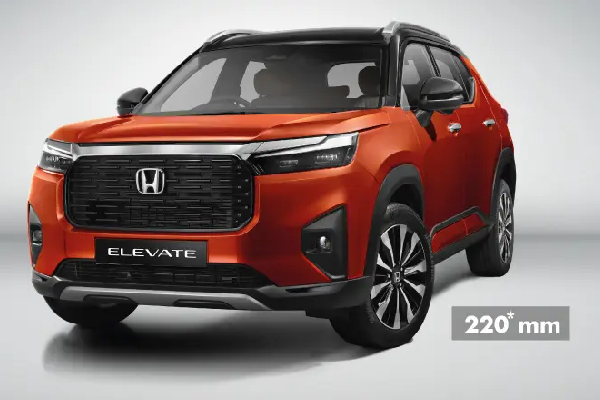 SUV
SUVALL New Elevate
-
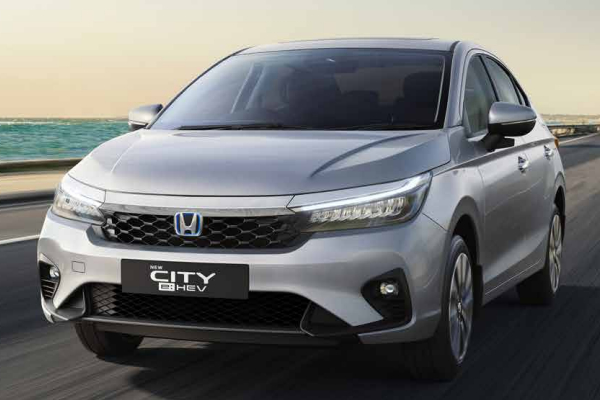 SEDAN
SEDANNEW CITY e:HEV
-
 SEDAN
SEDANNew Amaze



